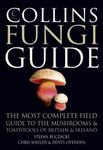Handbook / Manual Identification Key
By: Robert A Samson(Editor), Jos Houbraken(Editor), Ulf Thrane(Editor), Jens C Frisvad(Editor), Birgitte Andersen(Editor)
481 pages, 326 colour photos and b/w line drawings, 28 colour tables
![Food and Indoor Fungi Food and Indoor Fungi]()
Click to have a closer look
About this book
Customer reviews
Related titles
About this book
Language: English
Many new names, many new fungi, and new colour plates: The lab manual Food and Indoor Fungi is fully updated. The new book is based on eight previous editions and all of them were needed to come to this edition. The biggest differences between the first edition and this new one are the use of the single name nomenclature system, the updated taxonomic schemes and the addition of various species descriptions.
Fungi are present in the built environment, where people spend major parts of their lives. When moisture is available, fungal growth causes material deterioration and affects the health of the occupants, including allergic reactions and infections (e.g. aspergillosis in hospital settings). Also, the relevance of fungal food contaminants and their mycotoxins is ever increasing. They cause losses worldwide, and are key responsible for food insecurity in tropical Africa and other developing countries. Furthermore, they affect food safety and health via the production of numerous mycotoxins, both pre- and post-harvest, in food and feed. The mycobiota of food and indoor environments are related.
The lab manual Food and Indoor Fungi is a standard reference source for information on food and indoor fungi. Previous editions have been cited over 3000 times, indicating the relevance of this manual in the community studying indoor and food fungi. This book is especially suited for training people with different interests and backgrounds (e.g. students, indoor air specialists, hygienists, lab technicians, academics). Food and Indoor Fungi is richly illustrated with more than 300 colour plates, most of them as full page. It also contains introductory texts to the genera, many keys to the important species and an index.
Correct identification of indoor and food fungi is difficult, but crucial, as this is at the base of all information. Due to the introduction of the single-name nomenclature and the advances in taxonomy, many (new) genera and species names were introduced in the last years. It is difficult for the end-users to keep up with the latest taxonomic changes. Over the last decades, an abundance of information on food- and indoor fungi was generated, such as data on physiology, mycotoxin production, ecology and pathogenicity. These data are dispersed over many publications and books. Furthermore, incorrect information is also being published and chronically used/reported. A resource-linking, state-of-the-art species definition with curated, state-of-the-art information is therefore the crucial first step in many studies.
Customer Reviews (1)
Handbook / Manual Identification Key
By: Robert A Samson(Editor), Jos Houbraken(Editor), Ulf Thrane(Editor), Jens C Frisvad(Editor), Birgitte Andersen(Editor)
481 pages, 326 colour photos and b/w line drawings, 28 colour tables



































